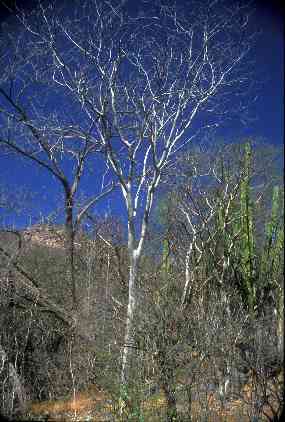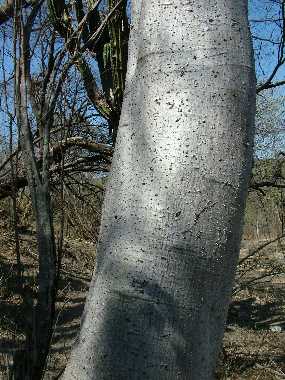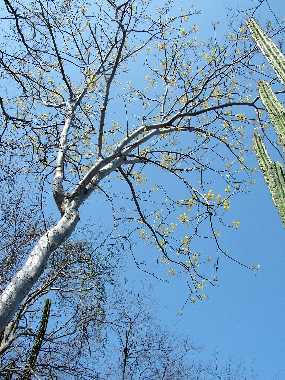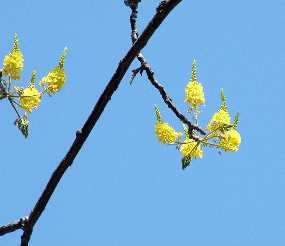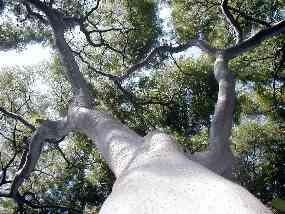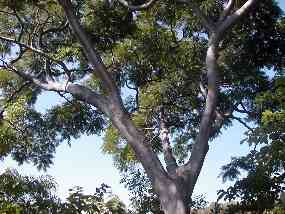Research and Conservation in Southern Sonora, Mexico
Conzattia multiflora (palo joso)
Tropical forests are characterized by four vegetation layers. There is an herbaceous ground layer, a shrub and sapling understory, a continuous
upper canopy, and an overstory of emergent trees, isolated giant species that punch through the upper canopy. In the northern reaches of tropical deciduous forest in southern Sonora, this emergent layer is almost completely missing; Conzattia multiflora is the only representative.
Joso attains a height of 80 feet, tall for a Sonoran tropical tree. It is not common, but occurs as individuals and small scattered groves
on steep slopes and ridges.
Flowers appear at the beginning of the summer rainy season (July), just before the trees leaf out. Except for palm trees, joso has the
largest leaf area of Sonoran trees. They are not a solid sheet of tissue, but are composed of hundreds of tiny leaflets.
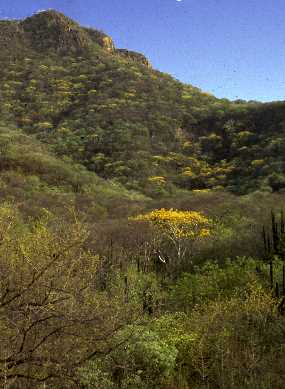 |
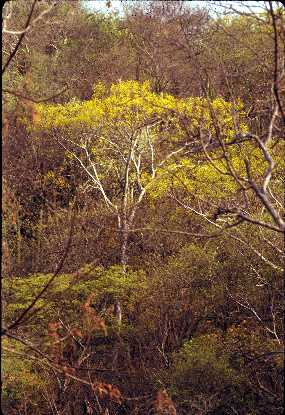 |
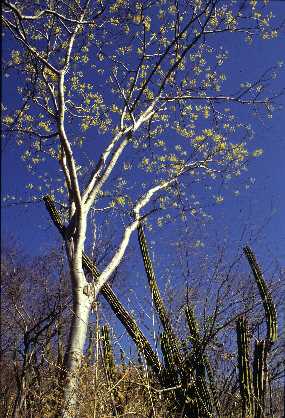 |
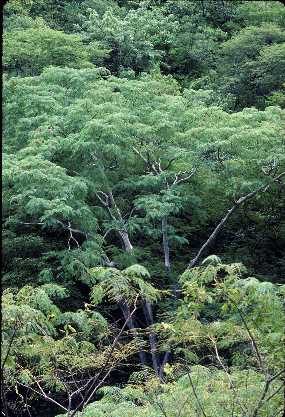 |
| Four images above: Conzattia multiflora flowers at the beginning of the rainy season, then quickly leafs out. Near Alamos, Sonora. Photos: S.A. Meyer | |
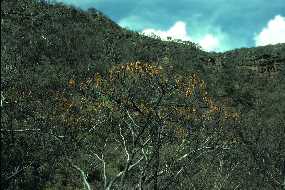 The seed pods of Conzattia multiflora persist after the leaves drop at the end of the rainy season. Photo: S.A. Meyer |








